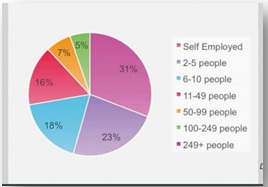

|
Syllabus: Prelims GS Paper I : Economic and Social Development-Sustainable Development, Poverty, Inclusion, Demographics, Social Sector Initiatives, etc. Mains GS Paper I : Indian Culture - Salient aspects of Art Forms, Literature and Architecture from ancient to modern times. |
Context
An excellent opportunity to reorganize, reconstruct, revamp and rejuvenate the Creative and Cultural Economy (CCE).
Background
The Covid-19 pandemic is having an unprecedented impact on the creative economy worldwide. During the Covid-19 pandemic the creative industries face an uncertain future. Individuals and organizations, both are in distress and facing challenges for survival. The creative economy will be very different in the aftermath of Covid-19 and some sectors may be decimated, which may further ticking by the India's annual growth for Financial Year 2019-20, to 4.2%, the lowest since 2008.
|
Creative and Cultural Economy (CCE): Most organizations business models operate in multiple ways e.g. in some cases an organizations work included artists management, education and research. Individual artists work included consultancy, cultural presenting and production and membership of artist hubs. Broadly all organizations and artists worked in multiple functions representing the entrepreneurial nature of the enterprise creative economy. |
In 29 states and 7 UTs, the industries of creative economic sector widely spread. Mumbai, Delhi, Kolkata and Chennai are major city-hubs for culture of national significance to creative economy. Second and third metros such as Pune, Bengaluru, Hyderabad, Chandigarh and Ahmedabad are also significant centres for culture. Taken together, 24% of organizations work in city or state geographies, 67% nationally and 9% internationally.
Challenges Facing By CCE Industries
Impact of COVID-19 on CCE Industries
Steps Taken
Conclusion
Certainly CCE sector is at the verge of fall and immediate support is the need of the hour. It is a real opportunity to boost the cultural economy that helps millions of performers in sustaining themselves without having to migrate for other temporary jobs.
Nurturing the creative arts can help strengthen India's economy. It can also increase our soft power simultaneously.
Connecting the Article
Question for Prelims
With reference to the Creative and Cultural Industries, consider the following statements:
1. These industries are associated only with artistic works.
2. These industries fall outside the purview of Corporate Social Responsibility (CSR) norms.
Which of the Statements given above is/ are correct ?
(a) 1 only
(b) 2 only
(c) Both 1 and 2
(d) Neither 1 nor 2
Question for Mains
Discuss the role of Creative and Cultural Economy (CCE) for social and economic welfare.

Our support team will be happy to assist you!
